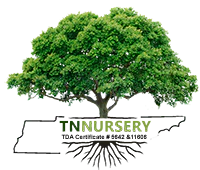Pecan Tree
The Pecan Tree is an elegant and welcome addition to any landscape. The abundant nuts that the tree produces are savory, heart-healthy, high in vitamins and minerals, and contain healthy fats. The nuts also offer antioxidant properties which help reduce bad cholesterol build-up. The rich, buttery-flavored, high-protein nuts can supplement meat, in one's diet, and attract a wide variety of wildlife. The smooth, variegated pattern of the nut shell add texture and interest to the landscape and may be used for decoration.
The Pecan Tree Has Stunning White Blooms
The wood of the tree is excellent for fine furniture and construction projects or firewood and smoking meat. The grand trees make lovely specimen plants and provide shade from the harsh sun. The dark green leaves glow yellow in fall, and the rough, deeply furrowed bark of the tree adds texture to the landscape. These trees are valuable specimens to have in one's landscape.
The Tree Looks Amazing In Landscapes
It is an elegant and welcome addition to any landscape. The abundant nuts that the tree produces are savory, heart-healthy, high in vitamins and minerals, and contain healthy fats. The nuts also offer antioxidant properties which help reduce bad cholesterol build-up. The rich, buttery-flavored, high-protein nuts can supplement meat, in one's diet, and attract a wide variety of wildlife.
The smooth, variegated pattern of the nut shell add texture and interest to the landscape and may be used for decoration. The wood of the tree is excellent for fine furniture and construction projects or firewood and smoking meat. The grand trees make lovely specimen plants and provide shade from the harsh sun. The dark green leaves glow yellow in fall, and the rough, deeply furrowed bark of the tree adds texture to the landscape. These trees are valuable specimens to have in one's landscape.
Get Yours Today At Garden Plant Nursery
It is widely grown to North America. It is the Texas state tree. It is consider to be in the family species of Walnut and Hickory tree. There are more than 500 different types of these trees, so the height of the tree can vary from 70 to 150 ft. high when it is mature, which can take up to 10 years, and will begin producing nuts when its reach 10 to 20 years of age and has a life span up to or can exceed 1000 years.
The tree needs longer warmer climate to grow so it is very popular in the southern state like Texas,Florida, Arizona, and country Like Mexico. Also, the tree requires 5 gallons of water every week until it is fully grown. Pecan Tree is great for providing shades for your yard. However, due to its large size, make sure to keep it away from any power lines for safety.
SCIENTIFIC name: Carya Illinoinensis
USDA climate zone: 5 through 9
Tree height: 70- 150 ft.
Tree spread: 40- 79 ft.
Soil type: alluvial and upland
Sun: Full sun
















































